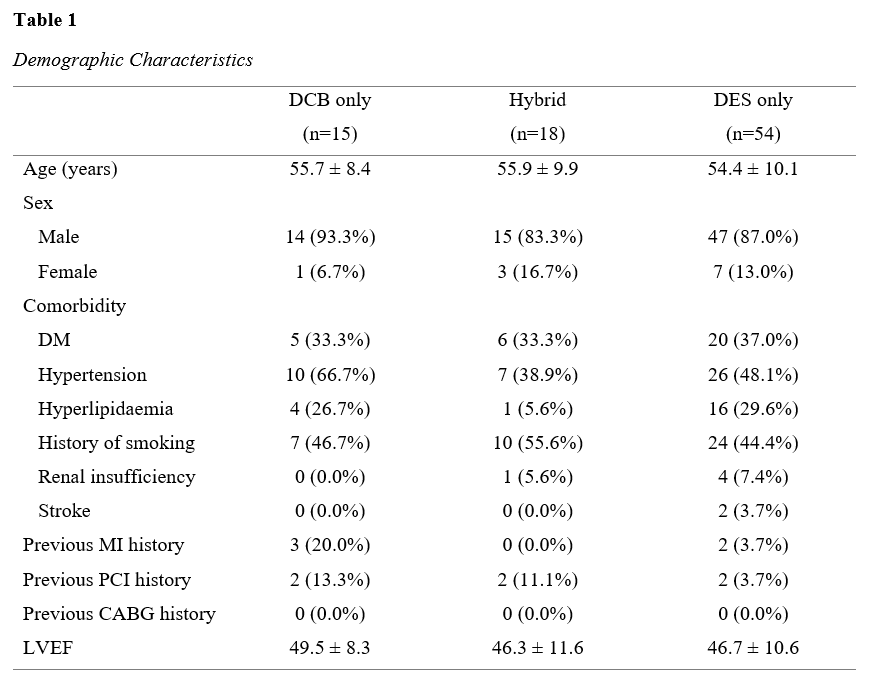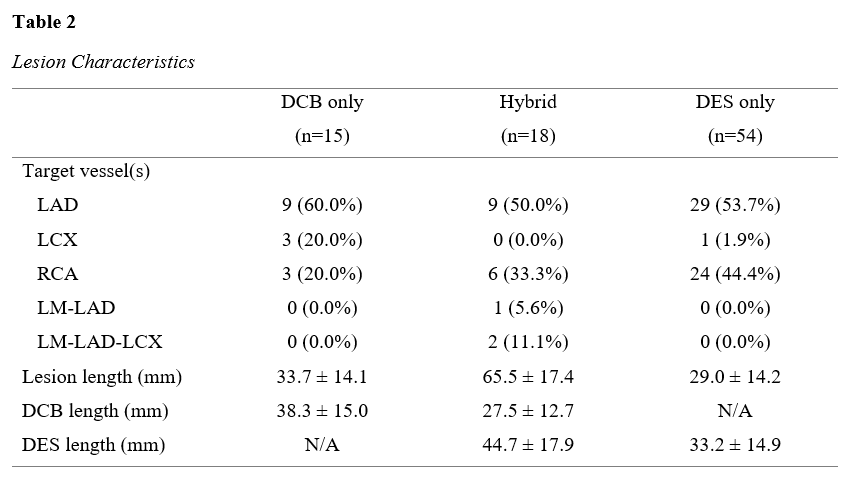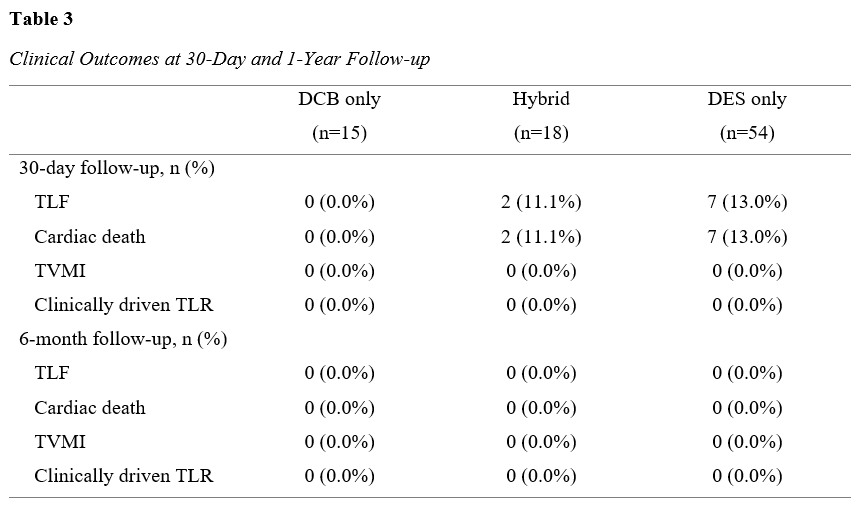Lots of interesting abstracts and cases were submitted for TCTAP 2025. Below are the accepted ones after a thorough review by our official reviewers. Don’t miss the opportunity to expand your knowledge and interact with authors as well as virtual participants by sharing your opinion in the comment section!
TCTAP A-013
Clinical Outcomes of Patients With ST-Elevation Myocardial Infarction Treated With Drug-Coated Balloons and/or Drug-Eluting Stents
By Nancy Virginia, Kai Soon Liew, Huan Yean Kang, Chai Yih Tan, Kenneth Kay Leong Khoo, Prabahkar Subramaniam, Mohd Khairi Othman, Aditya Fahmi Prianda, Saravanan Krishinan, Kantha Rao Narasamuloo, Chee Tat Liew, Dharmaraj Karthikesan
Presenter
Nancy Virginia
Authors
Nancy Virginia1, Kai Soon Liew1, Huan Yean Kang1, Chai Yih Tan1, Kenneth Kay Leong Khoo1, Prabahkar Subramaniam1, Mohd Khairi Othman1, Aditya Fahmi Prianda1, Saravanan Krishinan1, Kantha Rao Narasamuloo1, Chee Tat Liew2, Dharmaraj Karthikesan1
Affiliation
Hospital Sultanah Bahiyah, Malaysia1, Hospital Pantai, Malaysia2
View Study Report
TCTAP A-013
ACS/AMI
Clinical Outcomes of Patients With ST-Elevation Myocardial Infarction Treated With Drug-Coated Balloons and/or Drug-Eluting Stents
Nancy Virginia1, Kai Soon Liew1, Huan Yean Kang1, Chai Yih Tan1, Kenneth Kay Leong Khoo1, Prabahkar Subramaniam1, Mohd Khairi Othman1, Aditya Fahmi Prianda1, Saravanan Krishinan1, Kantha Rao Narasamuloo1, Chee Tat Liew2, Dharmaraj Karthikesan1
Hospital Sultanah Bahiyah, Malaysia1, Hospital Pantai, Malaysia2
Background
The role of drug-coated balloon (DCB) in the management of ST-elevation myocardial infarction (STEMI) is rapidly evolving, with ongoing discussions and emerging evidence shaping their current clinical position. This study aims to evaluate the clinical outcomes of STEMI patients treated with DCB, drug-eluting stents (DES), or a combination of both.
Methods
This is a retrospective observational study analyzing STEMI patients who underwent percutaneous coronary intervention (PCI) at a single center between January 2022 and December 2023. Patients were classified into three groups: DCB only, a hybrid approach combining DES and DCB, and DES only. Data on demographic and clinical characteristics, lesion details, procedural specifics, and clinical outcomes were collected from electronic medical records. The primary endpoint, target lesion failure (TLF), was evaluated at 30 days and 6 months post-procedure, defined as a composite of cardiac death, target vessel myocardial infarction, and clinically driven target lesion revascularization.
Results
The study included 87 patients with a mean age of 55.0 ± 9.7 years, and the majority were male. Among the subjects, 15 (17%) received treatment with DCB only, 18 (21%) were treated using a hybrid strategy, and the remaining 54 (62%) were treated with DES. Hypertension and smoking were prevalent risk factors across all groups. The overall mean left ventricular ejection fraction was 47.1 ± 10.4%. The majority of target vessels in all groups were the left anterior descending (LAD) artery. Patients in the hybrid group had significantly longer lesions compared to those in the DCB and DES groups (65.5 ± 17.4 mm vs. 33.7 ± 14.1 mm and 29.0 ± 14.2 mm, respectively). At 30 days, TLF occurred in 0 patients in the DCB group, 2 patients in the hybrid group, and 7 patients in the DES group. At 6 months, no TLF events were observed in any group.






Conclusion
These preliminary findings indicate that both DCB and hybrid approaches offer favorable short-term outcomes, with no TLF observed at 6 months. Further studies are needed to confirm these results and evaluate long-term efficacy and safety.


